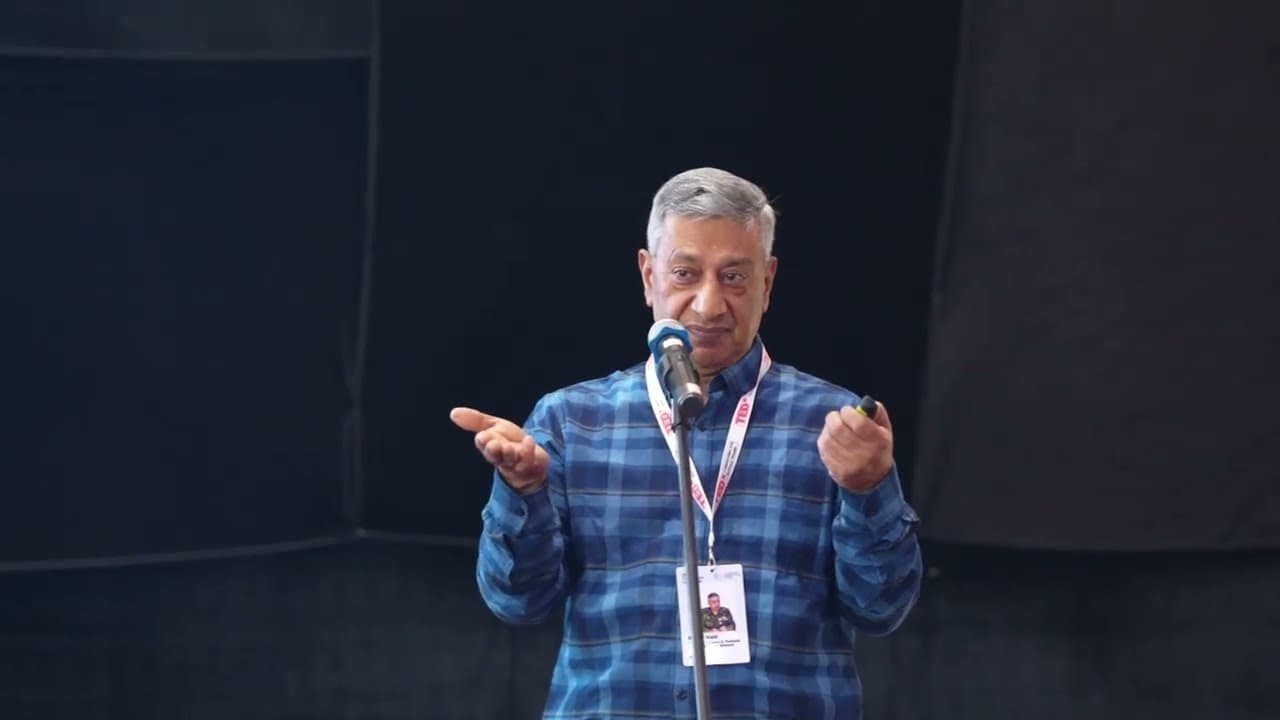Innovation at the frontlines | SP Vaid | TEDxCaledonian Intl School Youth
07 Oct 2024 (1 year ago)

The Genesis of Village Defense Committees
- Situations can ignite innovations, and one such example is the concept of Village Defense Committees, which was born out of the need to protect civilians in the Jammu region from terrorism in the early 1990s (5s).
- The Jammu region, largely hilly and sparsely populated, was vulnerable to terrorist attacks, and the biggest challenge was protecting the civilian population in these areas (2m22s).
- Terrorists started attacking the civilian population, resorting to massacres, and the idea was to force the Hindu minority to flee, similar to what happened in Kashmir Valley (3m36s).
- The concept of Village Defense Committees was born in 1995, when the author was the SSP of District Udhampur, and a village in the Riasi district was attacked by terrorists, killing two people and injuring many (4m41s).
- The villagers, who had fought back against the terrorists with minimal resources, requested the author to provide them with weapons to protect themselves, leading to the formation of the Village Defense Committees (5m52s).
- The Village Defense Committees, now known as Village Defense Guards, were formed to empower the local population to protect themselves against terrorism, and this innovation has brought about a change in the situation in Jammu and Kashmir (33s).
- Another area of innovation is the Police-Community Partnership groups, which aim to bring the community and police together to fight crime and terrorism (46s).
- The "Operation All Out" launched in 2017 is another example of innovation that has brought about a change in the situation in Jammu and Kashmir (1m20s).
- In a region where local implements, known as kahar and daati, were being used, the demand from the local people was to provide them with arms for protection, which led to the distribution of 10 weapons to the villagers, with 3 rifles given to those in need (7m1s).
- This initiative marked the beginning of the Village Defense Committee (VDC), initially known as the Village Bargain Court, in the Riasi subdivision, which later became a district (8m6s).
- A formal government order was issued by the Home Department, constituting Village Defense Committees and directing all Deputy Commissioners and Superintendents of Police to establish VDCs in each district (8m18s).
- The VDCs were to consist of 10-15 members, who would be trained, armed, and provided with ammunition, and this concept was implemented in all affected areas of the districts (8m35s).
- The situation in the region led to the idea of VDCs, which was seen as a response to the deep state of Pakistan's intentions (9m2s).
- The VDCs were trained and equipped with semi-automatic weapons, such as SLRs, and were given proper training and ammunition (11m13s).
Police-Community Partnership Groups
- The role of local police in Jammu and Kashmir is crucial, with 90% of operations launched in the region based on information provided by the Jammu and Kashmir police (12m17s).
- The Jammu and Kashmir police have made significant sacrifices, with 1,700 policemen losing their lives and thousands injured, and have been recognized for their efforts, including receiving the President of India's colors (12m47s).
- The concept of community policing, or Police-Community Partnership groups, was started in the late 1990s to bridge the gap between the police and the community, and yielded positive results (14m17s).
- Each police station was directed to identify respectable people from all communities in their area to be part of the PCPG, with the goal of addressing local issues and concerns (14m28s).
- The PCPGs were designed to address various issues, including social and law and order problems, and included representatives from different departments, including the Deputy Commissioner and heads of departments (16m0s).
- Regular meetings were established to enhance cooperation between the community and the police, with subdivisional officers meeting every two months and district officers every three months. This initiative significantly improved the situation in Jammu and Kashmir. (16m5s)
Operation All Out
- The introduction of Operation All Out was a response to the severe unrest in the Kashmir Valley following the death of a prominent terrorist figure in 2016, which led to a collapse of institutions and a rise in terrorist activities. (16m39s)
- Thousands of cases were registered, and many stone-pelters and their instigators were arrested under the Public Safety Act to regain control over the situation. (18m44s)
- Operation All Out involved collaboration between the Indian Army, Central Forces, and the local police's Special Operation Group, focusing on superior tactics and intelligence to target and eliminate top terrorist commanders. (19m23s)